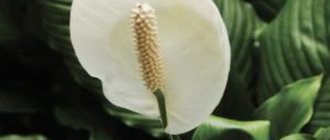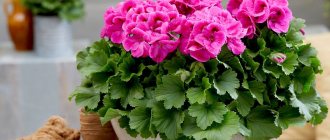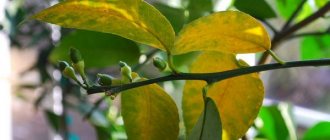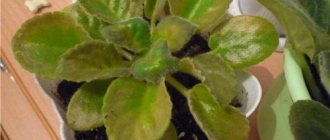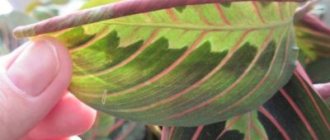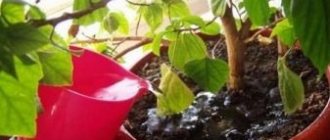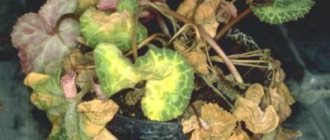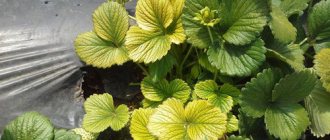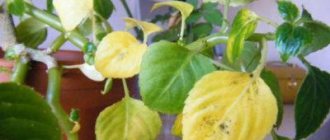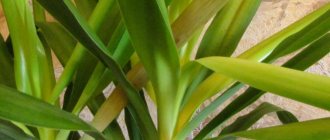02/06/2019 Michur Ivanov Garden and vegetable garden
It often happens that even with the most careful care of a plant, something goes wrong and the flower begins to suffer. Beginners who grow plants at home are not yet experienced enough to understand all the intricacies of care, disease treatment or prevention.
Geranium is a very common houseplant. It is generally accepted that it is quite unpretentious. But it is not so. Like any living organism, this flower needs care. Caring for geraniums is not very difficult, but you still need to know the main rules. What to do if the plant gets sick? Why do geranium leaves turn yellow and dry? Let's try to figure it out in our article today.
Soil too dry
This is one of the most common reasons. Who among us has never forgotten to water a flower on time? If you left home for a long time and left the plant alone and forgotten, the question of why geranium leaves dry becomes rhetorical. Plants definitely need clean water in sufficient quantities. In summer, geraniums need to be watered more often. In winter, she can go longer without water. But the plant will not survive without watering at all. Please note that both too dry and too wet soil are harmful to the plant. We'll talk about this point a little later.
Prevention
Instead of taking measures to save a sick plant, it is better to avoid such troubles altogether. If you love your flowers and take care of them, this will come naturally to you. After purchasing a geranium, pay attention to its condition.
Most likely, the flower needs replanting. Typically, geranium is sold in a small shipping pot filled with an inappropriate substrate. However, you should not replant the plant right away; give it 2 weeks to adapt to your apartment. After this, the flower should be transplanted into a pot of suitable size and placed in a place with bright, diffused lighting.
Experts say that pelargonium is more tolerant of drought than excess moisture in the soil. If you are in doubt about whether to water your geranium or if it is too early, wait another day and then water the plant. Never spray the leaves; geraniums don’t like it. On the contrary, drops of moisture, lingering on leaf plates covered with fluff, can provoke disease.
Pelargonium is equally intolerant of both excess and insufficient air humidity. She especially doesn't like cold drafts. During the heating season, the air at home may be too dry and hot; if possible, geraniums can be placed on a glassed-in balcony. At the same time, do not forget that the temperature of the flower should not fall below +12 degrees. At this temperature, geranium is watered once a week with a small amount of water.
To prevent the tips of geranium leaves from drying out from too dry air during the warm season, you can place a saucer with water or a tray with wet expanded clay nearby. If possible, it would be good to use a household humidifier for this purpose.
Too much light
It would seem that the reason is rather strange, because everyone needs light. But it is important to distinguish between the effects of warm spring sun and scorching summer heat. Geranium is a fairly heat-loving plant, but it will not withstand constant heat. If the flower is exposed to the sun for a long time, the leaves will certainly turn yellow and curl.
In this case, the simplest thing you can do is move the plant to a more shaded place. It also happens that a flower begins to suffer in winter, when there is very little sunlight. This is due to space heating. After all, very often flowers in pots stand on the windowsill above the radiator, which is precisely the source of hot and dry air. In this case, also take care to move the plant away from the hot radiator.
Incorrect conditions of detention
Due to incorrect humidity and temperature indicators, short daylight hours, tight or too loose containers, the leaf plate changes its shape or color.
Lighting
Pelargonium loves well-lit window sills. But it needs to be shaded from direct sunlight, because of which the leaves will get burned. In the winter-spring period, on the contrary, the flower is placed in the sunniest place.
Temperature
In autumn and spring, it is better to keep pelargonium on a glazed balcony. The main maintenance condition is that the air should not be very cold +10…+12 °C.
Optimal indicators:
| Season | Temperature |
| Summer | +20…+25 °C |
| Winter | No more than +14 °C |
Humidity
Geranium does not tolerate air dried out by heating devices. To avoid leaf falling, it is better to purchase a humidifier or use a spray bottle. But you need to spray the liquid not on the plant, but at some distance from it. A container of water or wet expanded clay placed nearby will also solve the problem.
It is better to place the pots away from radiators and ventilate the room once a day. But this must be done carefully, because the plant does not like drafts. It also loses moisture from the surface of the leaves, causing them to curl.
Tight pots
The container in which pelargonium grows should not be small. If the roots become crowded, this will affect the appearance of the foliage. It will begin to dry out and lose color. If the pot is large, then the forces will be directed to the growth of the root system, but the flowers will not appear soon.
A plant planted in a container that is not the right size is replanted. This must be done carefully, because yellowing of the foliage can be caused by damage to the roots.
If the pot is changed during the flowering period, the flower stalks are removed.
Pests and diseases
Geranium is rarely affected by pests due to the bitterness of the juice, but there are those that still settle on the stems and greens. For example, a spider mite, it can be seen with a magnifying glass on the back of the leaves, which are covered with a transparent cobweb, dry and curl inward.
Two more dangerous parasites: whiteflies and aphids, which feed on sap. The drug Marathon or folk remedies (solutions of onions, tomato or potato tops) help fight them. You can prepare an infusion from a head of garlic and a liter of boiling water, let it sit for a week, dilute it with water at the rate of 50 grams per 10 liters and spray the leaves.
To cope with these pests, it is necessary to treat the plant with an insecticide. For example, Akarin, Fitoverm, Molniya, Vertimek. It is better to do this several times at intervals of 5-7 days.
And they are also affected by viral diseases, for example, leaf bacteriosis. Characteristic signs will be not only curling leaves, but also brown spots resembling a mosaic. Wilting even affects the stems. It is impossible to cure such an infection, so it is better to dispose of the flower in order to preserve the health of the plants around it.
If the root system is damaged by rot, when replanting, treat with a solution of potassium permanganate of medium concentration, pink color, for 15-20 minutes. For disease prevention, once every six months and as a top dressing no more than once every 14 days. When pouring crystals into water, it is difficult to calculate the grams and focus better on the resulting color of the solution.
The pot is too cramped or spacious
This also happens. Caring for geraniums involves placing the flower comfortably in a pot. But if it is chosen incorrectly, the plant will begin to suffer.
In a pot that is too cramped, the root system will begin to atrophy, because the roots simply have nowhere to grow. The deciduous part will also begin to suffer from this. But a pot that is too loose will also deform the roots. If geranium leaves curl, what should I do? You should pay attention to the volume of the pot. If necessary, the plant must be replanted. Otherwise, it will constantly hurt and have yellow leaves.
Other problems with geranium leaves
There are other, less common problems with the leaf apparatus of geraniums that a gardener may encounter.
Geranium leaves curl inward
Curling of leaves is associated with a lack of moisture in the soil, air and increased ambient temperature. More often, this state of the plant is observed on a hot summer day, if the flower is standing in the sun. In summer, geraniums need to be watered every 2 days, keeping the soil moderately moist.
Geranium leaves turn yellow around the edges, what to do?
Yellowing of the edge of the pelargonium leaf blade indicates chlorosis. This disease is caused by a lack of minerals in the soil, which is why the flower does not receive enough nutrition. It is necessary to feed the plant with complete mineral fertilizer, with the addition of microelements: magnesium, zinc, iron, manganese, boron.
Why do geranium leaves turn lighter?
Uniform paleness of pelargonium foliage indicates a lack of nitrogen or lack of lighting. It is useful to feed the flower with a weak solution of chicken droppings (concentration of the substance is 1 part to 20 parts of water) or urea. Spraying the foliage with a solution of ammonia will help: 1 tbsp. l. drug per 1 liter of cold water.
If geranium leaves turn black and dry out
The foliage of the plant becomes covered with brown or black spots due to fusarium disease (blackleg). The disease is caused by fungi that multiply intensively when there is excess soil and air moisture combined with low temperature.
It is almost impossible to save a geranium affected by fusarium. You can only separate healthy cuttings and, after keeping them in Fitosporin or a solution of potassium permanganate, plant them for rooting.
Leaf damage
Why do the edges of geranium leaves dry out? Perhaps you simply injured the plant. If the edges of the leaves constantly touch the window glass or a hot radiator, they are simply doomed to begin to turn yellow and dry out. It happens that a flower is damaged when moving, when moving to another place, or when handled incorrectly due to inexperience. Therefore, if you decide to start your floriculture with this particular plant, collect enough information on how to care for geraniums at home for beginners. Note that it is better to tear off completely dry and yellow leaves.
Diseases and pests
If, with good competent care, geranium leaves still turn yellow, then the cause may be diseases of indoor plants.
Gray rot
Pathogen: Botrytis cinerea (gray botrytis). Lives in the ground from one to two years. Spreads by wind, with soil, water, and other infected plants.
Causes:
- moisture stagnation:
- high air humidity;
- excessive spraying;
- a large amount of nitrogen in the soil;
- poor ventilation.
The disease is characterized by damage to foliage. Areas with a velvety coating and brown spots form on it. The disease affects the lower leaves most severely.
First aid: treatment with fungicides (Fundazol, Vitaros).
Rhizoctonia rot
Pathogen: Rhizoctonia solani. Infection occurs through the soil.
Causes:
- excessive amount of fertilizing;
- exceeding the permissible temperature;
- excess moisture;
- light deficiency;
- poor ventilation;
- a difference of 6...8 °C between the temperature of the soil and the surrounding air.
The disease affects the roots and stems of the plant, causing depressed spots to appear on the stem. The fungus begins to spread over them (to a height of no more than 25 cm).
First aid: stop watering and treat with fungicides (Fundazol, Vitaros, Rovral).
Alternaria blight
Pathogen: Alternaria alternata. Infection occurs through the soil, especially under greenhouse conditions (warm and humid).
The reason is high humidity.
Yellow and brown spots with a light center appear on the leaves. At high humidity they are covered with dark velvet. Most often, the disease affects zonal pelargonium.
First aid: treatment with fungicides (Skor, Ridomil Gold, Rovral).
Verticillium wilt
Pathogens: Verticillium dahliae and albo-atrum. Lives in the ground for up to 15 years. Infection occurs through damaged roots during rooting of cuttings.
The disease is especially active in summer, when the weather is warm and the soil dries quickly.
It begins with yellowing of the lower leaves. Subsequently, the disease covers the entire plant. In severe cases, you have to throw away the pelargonium along with the soil.
First aid: maintaining proper soil moisture and treating with fungicides (Fundazol, Vitaros, Rovral).
Rust
Pathogen: Puccinia pelargonii-zonalis. Transmitted through other affected plants with water and air.
The onset of the disease can be determined by brown dots on the stem. Then the leaves begin to turn yellow. Gradually they all fall off.
First aid: reducing air humidity, stopping spraying, getting rid of diseased leaves, treating with fungicides (Topaz).
If indoor geraniums turn yellow, you need to inspect the plant to see if it has been attacked by parasites. They rarely attack pelargonium, since the strong specific smell repels them.
Pelargoniums are usually plagued by whiteflies. She lives and lays larvae under the flower. If the colony of pests grows to a large size, the leaves turn yellow or turn brown. You can see the whitefly with the naked eye. It is up to 3 mm in size with white wings.
When geranium leaves begin to turn yellow and curl inward, it is an aphid infestation. It is difficult to get rid of it, but it is possible. To do this, remove all affected parts of the plant, and then treat with Fitoverm or Mospilan.
We recommend reading an article about why indoor geranium leaves can curl and dry out and what to do about it.
If geranium leaves dry out: what to do?
First of all, you need to pay attention to the type and nature of the external manifestations of the disease. If dry spots appear on the plant's leaves, the problem can probably be eliminated by thoroughly watering the soil. If the spots are brown, it is likely that there is too much water in the soil.
If the damage looks more like a dent or blister, it is possible that the plant is being bothered by pests. If the leaves curl and fall off, there may be several reasons. This is cold, improper watering, excessively dry air. You need to try to critically assess the situation and provide first aid to the flower: if it is dry, water it, if it is hot, take it to the shade. Continue to observe the geranium and you will definitely determine the cause of the damage.
Possible diseases
Botrytis mushroom
A large number of reasons leading to yellowing of geranium foliage have already been described, but there is one more - the appearance of the botrytis fungus. It can be recognized by the damage to the leaf plate: it begins to extend not from the edge of the foliage, but in a triangle. Overcoming the disease is not as easy as it seems. Fungicidal treatments do not always give the desired result the first time.
Botrytis
Important point. The best methods for controlling the fungus are to ensure free air exchange between plants and a cool room temperature. Flowers should not be very close to each other.
Root rot
The disease is identified by the presence of depressed dark spots in the lower part of the stem; fungal mycelium will develop on them, causing root rot. Gradually the plant withers.
Root rot
The problem may occur for the following reasons:
- too much fertilizer in the soil;
- increased room temperature;
- excessive watering;
- non-compliance with light conditions;
- lack of ventilation.
The following are taken as control measures:
- compliance with agrotechnical aspects;
- stopping watering;
- treatment of the crop with fungicides: “Fundazol”, “Rovral”.
On a note. For geraniums, it is recommended to choose high-quality, well-aerated soil.
Leaf rust
The main symptom of the disease is the appearance of rusty-yellow areas on the leaf blades. Thickenings filled with spore powder may form. With severe damage, the plant becomes lethargic and drops its leaves.
Treatment is carried out:
- using bottom watering;
- dead parts of the plant are removed;
- fungicidal drugs are used.
Need to know. Only at the initial stage of the disease can you get rid of it.
Rust
Bacterial
Geranium diseases include bacterial ailments; they are spread by microbes. Triangular brown spots may appear on the leaves. The affected areas gradually dry out, and all pelargonium fades.
How to deal with the problem:
- Cleaning the soil, replanting the crop into another container with better quality soil. It is recommended to throw away the old soil;
- Carrying out watering in the morning;
- Use of fungicidal agents.
Viral
This category of ailments is characterized by various symptoms: both growth arrest and the appearance of spots shaped like a violet-brown circle. Fighting viruses is not much different from fighting bacterial diseases. Particular attention is paid to insects that carry the infection.
spotting
The disease is otherwise called Alternaria. The underside of the leaf becomes covered with spots and bubbles, then fades, turns yellow, and falls off.
With cercospora, the appearance of pale white sunken spots is also observed, then they turn gray. The affected area becomes brown over time and rises in the central part.
Treatment:
- removal of affected leaf blades;
- thinning of shoots;
- fungicide treatment.
Edema
The disease is determined by the presence of bubbles containing liquid inside. They are formed on the leaf parts. Initially, the bubbles are light green in color, then turn brown. Swelling occurs due to a large amount of moisture and too low temperature of the air and soil. Symptoms are eliminated by normalizing the conditions of the plant.
Edema
Geranium pruning
If yellow leaves are still present, they must be removed to prevent the disease from spreading to the rest of the foliage. At the same time, you can give the plant a beautiful shape. How to do it right?
First, inspect the geranium. All damaged leaves and twigs must be carefully removed. You can do this with any sharp tool - a pruner is best (if you don't have one, a knife will also work). Treat the instrument with an antiseptic and carefully remove damaged parts.
Next, stop at the most beautiful and healthy stem. If it has lower shoots, cut them off. Remove any nearby stems as well. A stem that is too tall needs to be shortened a little by cutting off the top. This way, the geranium will not shoot upward, but will use its strength to grow side shoots and take on the appearance of a beautiful and lush tree. If the plant has stems that are too crooked, remove them too, leaving small stumps.
When you finish pruning the geranium, do not forget to treat the cut areas with ash, brilliant green, activated carbon or alcohol - in short, any antiseptic that will prevent infection and promote rapid healing of the cut.
It is important not to overdo it and not to cut off too many stems, because this will significantly delay the flowering time. If you cut off more than 20 percent of the above-ground part, the plant may spend a large amount of resources on restoration and not bloom at all. Therefore, if you carry out pruning in the spring, make sure that after the procedure the geranium is not in a draft, that the soil in the pot is well watered and that the soil in the pot does not dry out. In addition, mineral fertilizers are very important for rapid growth and restoration of the flower. How often should they be used? Add them twice a month.
Treatment of diseases
Blackleg. The stem darkens and rots. Infected cuttings are pinched off and the cut top is rooted.
Gray rot . It occurs on peduncles, leaves and stems. For resuscitation, remove all rotten parts, temporarily do not water or feed the geranium. Treatment is carried out with solutions: Fundazol or Vitaros.
Late blight (late blight). Fungal spores enter the plant from the soil, tubers, and plant tops. Indoors, spores are transferred to other flowers from the leaves by drafts. The cause of the fungus is excess moisture and dense soil. The soil in the pot needs to be updated and the pelargonium treated with such products as Ridomil, Previkur or Profit Gold. In winter, the flower indoors is set to the lowest possible temperature and the number of waterings is reduced. Equipment and pots after diseased bushes should be thoroughly sterilized.
Chlorosis . With a deficiency of iron and/or manganese, geranium may develop chlorosis. Then growth slows down and the color of the leaves changes. The bush needs to be transplanted into fresh soil and fertilized with a full complex of mineral fertilizers.
Etiolation. Low lighting leads to elongation and deformation of the trunk, smaller leaves and loss of their former color. In summer, the flower pot should be placed on the sunny side, but provided with partial shade during the daytime sun. In winter, artificial lighting will be required.
Eden . Even when absorbing water from waterlogged soil, pelargonium does not completely evaporate all excess. Then she gets edema. To prevent this from happening, you need to provide it with drainage not only in the pot, but also place a tray with expanded clay or broken bricks under it. After drying the soil, reduce the number of waterings and regularly ventilate the room.
It is important to know! Leaves turn yellow when there is an excess of nitrogen in fertilizers, and dry out as a result of oversaturation with phosphorus. It is necessary to replant the geranium in fresh soil, limit nutrients with these microelements, and add stimulants to the soil: zircon or epin. Do not oversaturate the soil with herbicide when fighting weeds and with fungicide when treating rot. These drugs worsen the life of the plant and lead to loss of foliage.
Fertilizers for restoring geraniums
From time to time, a flower needs not only clean water and care, but also nutrients. Don’t be surprised why geranium leaves dry out - the plant just needs fertilizer. In order for it to recover as quickly as possible, it is important not to overdo it. According to the rules, fertilizers must be applied in April. They focus on fertilizers with a high percentage of nitrogen. It is this component that has a positive effect on the foliage part of the plant. But during the flowering period, nitrogen can cause new buds to set later.
If the leaves are suffering from diseases or pests, you will need fungicides and insecticides. Some time after applying these products, the foliage will begin to recover, and the volume of damage will significantly decrease. A course of treatment may be required for maximum effect. Sometimes experienced gardeners recommend transplanting the geranium into another pot and using new soil.
Reasons why leaves turn yellow
Geranium in the interior captivates the eye with its bright and lush inflorescence. It can bloom from early spring to late autumn. It also has medicinal properties, acting as a home first aid kit. But sometimes the leaves turn yellow and dry out, and even fall off. The joyful mood gives way to anxiety. Why do the leaves dry out? Why is this happening?
There are quite a lot of reasons that are worth understanding in detail.
Lack of nutrients in the soil
Excess and deficiency of nutrients negatively affects the health of the plant. Causes the development of various diseases. The leaves turn yellow due to a lack of such chemical elements.
Lack of nitrogen. This element is vital for growth and nutrition. Nitrogen starvation changes the color of geranium leaves, sometimes leading to wilting and burns. The lower leaves begin to turn pale and yellow, this is due to the loss of chlorophyll and the predominance of carotene. Yellowness begins at the top of the leaf, gradually spreading, changing the entire surface.
Important! An excess of nitrogen also provokes yellowing, especially observed in royal geraniums. She doesn't like frequent baiting.
- Potassium deficiency appears first on older leaves. They turn yellow at the edges with small dead areas, which subsequently spread to the entire surface. Gradually affecting the entire plant.
- A lack of magnesium is reflected in the general condition of the flower. This chemical element is necessary for photosynthesis. When there is a deficiency, the older and lower leaves turn yellow at the edges, spreading inward. The center and veins remain green, the color resembles a herringbone pattern. When the defect becomes visible, the ends wrinkle and curl towards the top.
Important! A lack of magnesium in the soil leads to insufficient bud formation. You can replenish supplies with wood ash and ashes.
Iron deficiency is one of the common diseases of geranium, which is called chlorosis. Often found in highly acidic soils. If there is a deficiency, the edges of the leaves dry out and turn yellow, while the veins remain green. The growth and development of pelargonium stops.
Advice! To eliminate iron deficiency, you can use the folk method of sticking rusty nails into the ground.
Excessive watering
Flower growers, because of their love for pelargonium, water more than necessary. She becomes lethargic and ugly in appearance. If yellow spots appear, this is one of the symptoms of excessive soil moisture. The leaves begin to rot and fall off.
Why the leaves turn white, one of the reasons is waterlogging of the soil. As a result, mold appears on the flower, which is called Botrytis. To prevent leaf disease, spray with fungicide.
Reducing watering has a negative effect on geraniums. The leaves lose their elasticity, curl and turn yellow.
Important! Yellowness may be due to hard water, especially if it is not prepared and is taken from the tap.
Sunburn
Pelargonium is a light-loving plant; in open areas it is not afraid of direct sunlight. On a window sill indoors, you can get sunburn through the glass. As light passes through the window, the temperature rises, the leaves become spotted and turn yellow. If they are pressed tightly to the glass, yellowing cannot be avoided. This phenomenon is not considered a disease, it is of an aesthetic nature. You can return the green color to the flower by cutting off the shoots.
cramped potty
The reason for the yellowing of the leaves is a cramped pot. Most flower growers believe that it does not matter in which flowerpot the flower will grow. Lack of space affects the development and growth of the plant. To solve the problem of dry leaves, you need to transplant the geranium into a spacious pot.
The appearance of pests
If the temperature and humidity are normal, but yellowness has appeared. What to do in this situation? It is worth carefully inspecting the bush for the presence of pests.
The following insects - pests - can settle in indoor geranium:
- Mealyworm. After the appearance of the insect, the leaves turn yellow and curl, eventually falling off. You can see white fluff on pelargonium. Fighting in the early stages of the disease is simple; just wipe the affected areas with alcohol. In the later period, it is more difficult to remove the worm; you will have to treat it with a special solution every day.
- Spider mite. One of the symptoms is a hanging cobweb and the appearance of yellow spots on the leaves. It does well in a dry room. Spider mites are very lively and difficult to remove in advanced stages. It is necessary to spray the plant with a special product three times a day for about a week.
Interesting! A tick in unfavorable conditions may fall into a state as if it had died. Under favorable conditions, it awakens and begins to reproduce.
Whitefly infects plants, causing yellow spots to appear. On the underside of the leaf, entire colonies of pests can be found. Adult insects are not as scary as their larvae. They suck the juice from the plant, as a result the leaves curl inward and turn yellow. To combat, a special preparation is used; it needs to be sprayed every two or three days.
How to water this plant correctly?
Sometimes when asked why geranium leaves dry out, you can get a very simple answer. These are basic watering problems. Despite the fact that geranium loves moisture, sometimes it can suffer due to its excess. Here you need to have moderation.
When you water your flower, be careful not to let the water get on the foliage or stems. It is best to water geraniums using a small watering can without a diffuser, which will provide a thin stream. It should be directed not at the root of the flower, but at the ground along the wall. If the soil in the pot becomes too dry, the resulting void will prevent water from reaching the roots. Keep an eye on the soil surface. If there are cracks, it means the earth is dry.
How to water geraniums in winter? Experts give some advice. There is no need to pour copious amounts of water on the flower at this time, as the geranium is dormant. Just keep the soil moist. In the spring, geraniums will require more water, as new shoots will need it to grow. You should not water the flower more often than once every two days in winter.
With the onset of the warm season, the plant will need more moisture. There cannot be specific and accurate recommendations here, since everything depends on the air temperature and weather conditions. Water the soil as needed. On hotter days, be careful not to crack the surface, and on cool, humid days, the geranium will require less water than usual.
When autumn comes, the plant will stop producing buds. During this period, it is important not to overwater the geranium. Depending on the air temperature in the apartment, water the flower several times a week.
How to save a completely dried out plant?
There are times when geraniums are completely dry. But even in this situation, you can save the plant if you make some efforts:
- Carefully examine the flower. A dried bush may only have its tops alive. They need to be cut and placed in water. Geranium grows roots very well. After this, you can plant the stepsons with roots in a flowerbed in the garden or in a pot.
- If the trunk is alive, the plant should be placed in any cool place for the winter. With the arrival of spring, the stem may sprout.
- If the trunk is dry, cut it off and put the root in water for several days. When new roots appear, plant it in the ground.
To create favorable conditions for the growth of geraniums, to avoid drying out and diseases, it is necessary to perform preventive procedures:
- timely replant plants in suitable pots;
- observe moderation in watering;
- keep geraniums in a place protected from drafts;
- regularly apply organic and mineral fertilizers (during flowering - 2 times a month);
- periodically inspect the plant: promptly remove yellow leaves, diagnose and eliminate pests.
Yellowed leaves on geraniums are an alarming signal for the gardener. If you understand in a timely manner the reasons for such a plant malaise and eliminate them, the geranium will not suffer at all and will soon begin to delight again with its bright buds.
If the plant is flooded
It happens that you are overzealous in trying to water your geranium well. At first glance, such a plant cannot be saved. This is not entirely true. First you need to assess the scale of the disaster.
Carefully remove the plant from the pot and examine the roots. If they have not yet darkened, prepare new soil and urgently replant the geranium. If the roots are dark and soft, unfortunately, the plant cannot be restored.
It happens that some roots have not yet had time to rot. Then cut off the entire damaged part and treat with an antiseptic: ash or activated carbon. Replant the flower in fresh soil - in this case, you can hope that not all is lost.
When is it too late to help?
- If the geranium has dried out, then the first thing you need to do is inspect its roots. If they are elastic and white, then all is not lost. You need to replant the plant in prepared soil - perhaps it can be revived. If the roots are limp and covered with dark spots, then the bush is unlikely to be saved.
- If the geranium has partially dried out, you can cut healthy cuttings, put them in water for germination, and then plant them.
- When the cause of drying is diseases or pests, then in case of severe damage it is better to give up trying to save the geranium. Often this is simply not possible. Pathogenic spores and parasite larvae remain deep in the soil and can be very difficult to completely remove.
Improper care of geraniums, first of all, affects the foliage - they begin to hurt and change color or curl. Why this happens and what to do when a problem occurs, read our articles.
Yellowing and drying of leaves occurs for a number of reasons, but if you know how to create conditions for a comfortable existence of the plant, then this problem will not bother you. If this does happen, then you shouldn’t despair - you need to give the plant a little time, and after a while the foliage will become beautiful and green again!
If you find an error, please select a piece of text and press Ctrl+Enter.
Prevention of geranium diseases: general recommendations
Problems are always easier to prevent than to solve. Therefore, preventing plant diseases is very important, especially if you are a beginner gardener. Let's look at how to care for geraniums at home for beginners. Try to follow simple rules:
- Do not place diseased flowers next to healthy ones. Flowers are quite capable of infecting each other, so if some plant you have is not entirely healthy, try to give it a separate place for quarantine. Observe it for several days, and if the need arises, treat the flower with special preparations. If you purchased a new flower, keep it in quarantine. It happens that problems do not appear immediately, and the first damage to a new plant will occur only when the neighboring flower is already infected.
- When transplanting a plant into a pot, do not forget to properly cultivate the soil. To neutralize pests or just be on the safe side, you can water the soil with a solution of potassium permanganate or keep it in a hot oven for a while.
- Try to place plants in the most suitable place. Please note that there may be drafts in the apartment. It is harmful to plants just as much as it is harmful to people. There is no need to place pots on windowsills with hot radiators, in places that are too dark or too cold.
- Do not forget to clean the geranium from dust and dirt, and trim dry and yellowed leaves in a timely manner. Make sure that mold does not start to develop on the leaves. Basic hygiene will bring undoubted benefits to the plant.
Control of parasites
Inadequate care makes pelargonium weak, and then it is “attacked” by various kinds of insects. Geranium pests and measures to combat them:
- Root mealybug . Waterlogged soil is a comfortable environment for the parasite, and geranium roots are its favorite food. After checking the root system, you need to cut off the areas with scale insects with a clean knife, and keep the healthy roots in a container with hot water for 2-3 minutes, then dry them and sprinkle them with charcoal powder. The bush is transplanted into another pot with sterile soil. The first pot must be doused with boiling water and treated with a sterilizing agent, just like a garden knife.
- Mealybug. Sometimes a novice gardener cannot understand who is eating the geranium leaves on the window. If white sticky lumps appear on the leaf blades and other parts, then this is a mealybug. The diseased flower should be isolated and the parasite removed manually, and then sprayed with a soap solution and alcohol. Advanced stages of damage by parasites require treatment with insecticides: Actellik, Aktara or Fufanon.
- Spider mite. Spider mites on geraniums gnaw through the skin and suck juices from leaves, stems, buds and petals. It spreads gray mold and viruses. All damaged parts are removed from the plant, removed from the pot and the stems and leaves are washed thoroughly under a warm shower with a soft sponge. After this, treat with a thick soap solution and do not wash it off for half a month, covering the bush with a bag. Then rinse thoroughly with warm water. Pots, trays, and flower stands must be treated with boiling water. Ticks can also be on window sills, frames, and in window cracks, so they should be washed with a solution of water and laundry soap, then treated with alcohol, and the curtains should be washed. Ticks do not like yarrow and garlic tinctures. To prepare an infusion of yarrow, grind 400 g of the dry plant and pour 1000 ml of boiling water. After 10 minutes, dilute with another 5 liters of water. Leave in a dark place for 2-3 days and treat the bush 3 times with a break of several days. For garlic tincture, you will need 180 g of product per 1000 ml of warm water, let the composition brew in a dark place for 7-8 days, then treat the bush by mixing 1 liter of water with 10 ml of tincture. Naphthalene, dichlorvos or turpentine are often used: naphthalene tablets or cotton wool soaked in a toxic agent are placed next to the pot, in a tray, then the bush is sealed with a plastic bag for 2 days, securing the bag with rubber bands or clothespins. The parasite will die during this time.
- aphids on geraniums at home: shoots and leaves will curl and become deformed; they need to be cut or removed manually.
- Whitefly. It develops vigorous vital activity on the reverse side of the leaves. It is removed with the drug Actra.
- Caterpillar. It lays larvae and makes many holes in the leaves. The drugs Senpai or Lipidocide will help rid the flower of parasites.
Direct sunlight
Although geranium is a light-loving plant, direct sunlight causes burns on its leaves. At first, the burned areas appear as yellow spots that gradually dry out. As a result, the affected leaf falls off.
In direct sun, the plant loses not the lower, but the upper leaves; the bush can burn on one side, but on the other the leaves will remain healthy.
Geraniums are usually placed on south-eastern windows, where there is a lot of diffused light and few direct rays . In other places the bush needs to be shaded. If geranium is planted in open ground for the summer, it is better to plant it in the garden under the protection of tree foliage.
Soluble chicory beneficial properties and contraindications for men, women and children
Mr. Summer Resident advises: how to avoid curling of geranium leaves
It is much easier to prevent a dangerous disease than to fight it. Therefore, the main advice will be prevention.
Measures to prevent curling and yellowing of leaves:
- Regular but not intensive watering.
- Mandatory plant inspection and pest control.
- Optimal temperature and humidity indicators.
- Comfortable and cool wintering. Regular ventilation of the room.
- Timely feeding. Strictly follow the instructions and adhere to the doses indicated on the drug labels.
- Choosing a suitable pot and a bright window sill without direct sunlight.
- In the warm season, take it out into the fresh air.
By following the recommendations and creating optimal conditions for growth, even a beginner will grow healthy pelargonium at home, which will delight you with abundant flowering and caps of dense greenery. After all, a strong plant is much less susceptible to viruses and pest attacks.
